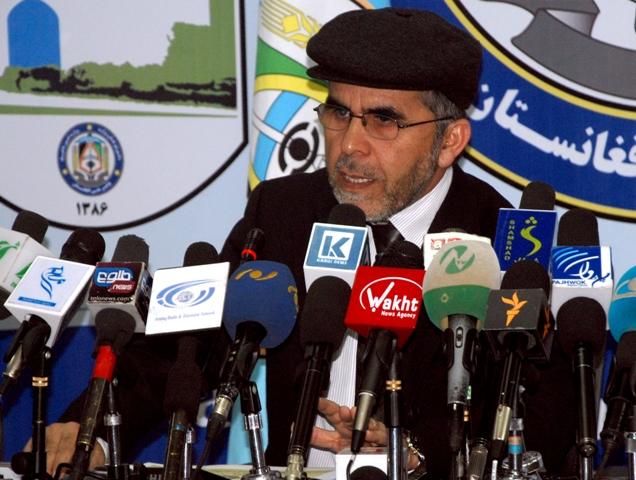KABUL‘s largest opium producer, an official said on Thursday.
As many as 3,026 smugglers, including 223 powerful drug lords, were detained in various parts of the country during the period, when more than 20 tonnes of narcotics were trafficked to foreign countries from Afghanistan, said the deputy minister of interior for counter-narcotics.
Baz Mohammad Ahmadi identified detained Afghan drug lords as Haji Ghulam Hazrat, Haji Bakhtawar, Haji Issa, Haji Lal Jan, Haji Amir Gul, Haji Aman, alias Lala Khan, Fateh Khan, Haji Sarwar and Saifullah.
The individuals have been sentenced from 10 to 20 years in jail by the Criminal Justice Task Force (CJTF), said Ahmadi, who revealed names of another 10 notorious drug smugglers had been shared with security organs to hunt them down.
He said the government had intensified efforts at arresting drug smugglers and destroying drug-processing facilities across the country. Smugglers remained under pressure throughout the year that saw more arrests on drug charges, compared with 2011 when 1428 smugglers were detained and 244 tonnes of narcotics seized.
Ahmadi admitted there had been a decline in seizure of chemicals used in drug processing, arguing the country’s long porous borders with neighbouring countries made it difficult to keep watch on all smuggling routes.
Up to 25 policemen lost their lives during 3280 anti-drug raids that resulted into injuries to another 58 policemen last year, according to Ahmadi, who claimed decline in international assistance to counternarcotics efforts in Afghanistan since the security transition process began.
He said they were concerned about a further decrease in international assistance for fighting drug smuggling and production in Afghanistan after 2014, when most of foreign combat troops are scheduled to leave.
He said drug production in Afghanistan could increase after security organs were shifted more responsibilities with the withdrawal of foreign forces.
Ahmadi also called for the revival of a 821-member anti-narcotics special force in order to fill the vacuumed to be created with the departure of organisations currently assisting the anti-drug effort.
A joint report released by the government and the United Nations Office on Drugs and Crime (UNODC) in November 2012 found high opium prices led to an increase in poppy cultivation in Afghanistan despite significant eradication efforts.
According to the 2012 Afghanistan Opium Survey cultivation was 18 percent higher in 2012 than it was a year ago, covering 154,000 hectares.
However, since plant diseases and bad weather had damaged crops, potential opium production fell 36 percent over the same period from 5,800 to 3,700 tonnes.
The increase in cultivation occurred in spite of a major push by the Government to promote eradication efforts, UNODC noted in the release.
The number of poppy-free provinces remains unchanged at 17, but Ghor province in the west lost that status in 2012 while Faryab province in the north regained it.
The agency noted that, in 2012, farm-gate prices for opium remained at a relatively high level at id=”mce_marker”96 per kilogram, which continues to provide a strong incentive for farmers to start or resume poppy cultivation in the coming season.
ma/mud
Visits: 31









GET IN TOUCH
NEWSLETTER
SUGGEST A STORY
PAJHWOK MOBILE APP